Description/achievement of initiative
Material Exchange works with the world's leading retail apparel and footwear brands to analyse, optimise, provide transparency and digitise their material supply chains. Material Exchange is on a mission to reduce waste, increase transparency and empower the global value chain to transform the textile, apparel and footwear industry. The digital material platform helps brands and manufacturers find the right materials and connect with the right suppliers. Material Exchange's global presence enables them to extend their UN Global Compact commitment and promote the SDGs across the value chain.
Implementation methodologies
Firstly, Material Exchange facilitates the support of digitalization of materials for suppliers across the value chain. With 3D scanning hubs in India, China and Europe, suppliers can reduce the amount of fabric swatches they send to brands around the world. This allows apparel and footwear brands to reduce their amount of physical sampling, drastically reducing waste in the sector. Seek opportunities to reduce waste at every instance\\r\\nAs Material Exchange benchmarks and tracks the impact on waste reduction, they support their value chain to find new and innovative ways to continue to reduce waste. \\r\\n \\r\\nAdditionally, Material Exchange has developed a proprietary sustainable search tool that allows brands to search for materials by sustainable attribute, such as recycled content, water stewardship, etc. Highlighting twelve categories that are in line with SGDs, responsible sourcing and a 1.5-degree pathway, Material Exchange empowers teams to innovate together and increase responsible sourcing.
Arrangements for Capacity-Building and Technology Transfer
In 2021, Material Exchange conducted the first ever "Digital Sourcing Survey" to benchmark the adoption and use of digital tools across the value chain. This data, in addition to proprietary Business Intelligence tools, allows Material Exchange to track the increased adoption of digital tools and the resulting reduction of waste, as well as the increase market support for sustainable materials. Material Exchange will continue to report on this data annually.
Coordination mechanisms/governance structure
The largest opportunity lies in integrating sustainability into the platform. Material Exchange: 1 )Increases sustainability visibility through the creation of a search directory specific to sustainable impacts and using Pavilions to highlight sustainable initiatives (e.g. ZDHC, Cradle2Cradle, etc.) 2) Supports transparency through the creation of T.I.D.E. (Transparent Innovation Digital Ecosystem) which broadens traceability and allows external innovators to pass data through the platform. 3) Verifies testing and sustainability claims directly with the certifying bodies to ensure accuracy and transparency of suppliers' sustainability efforts. 4) Partners with brands to ensure the platform offers sustainable sourcing options to meet SASB, SDGs and other public commitments. Additionally, Material Exchange supports sustainability all across the value chain. They share their expectations and code of conduct with all partners, to ensure that they align with Material Exchange's UN Global Compact, UN Women’s Empowerment Principles and other commitments.
Partner(s)
FDRA, USFIA, Day One Capital, Inventure, Lyra Ventures, Partech, Norrsken VC, Textile Exchange, UNGC, Eurofins, WRAP, ZDHC, Kingpins, Lenzing, Dupont, Cradle2Cradle

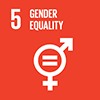
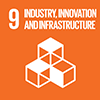
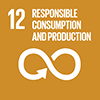
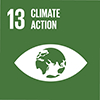
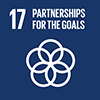
 06/2021
06/2021
 Time-frame: 07/01/2021 - 07/01/2025
Time-frame: 07/01/2021 - 07/01/2025